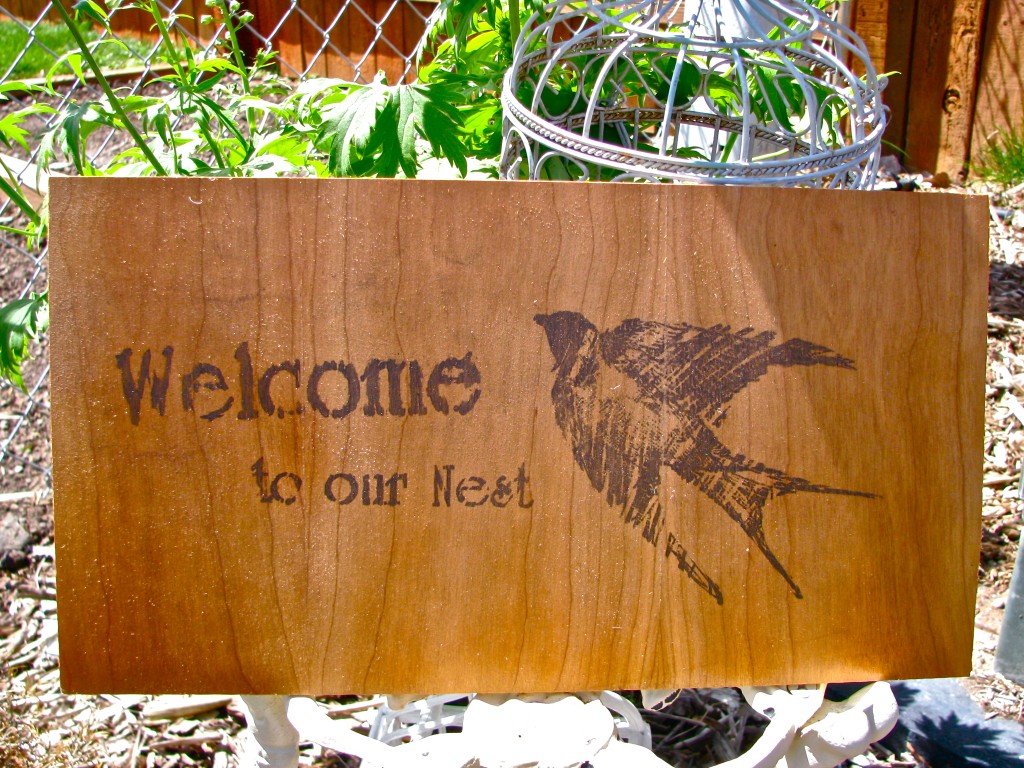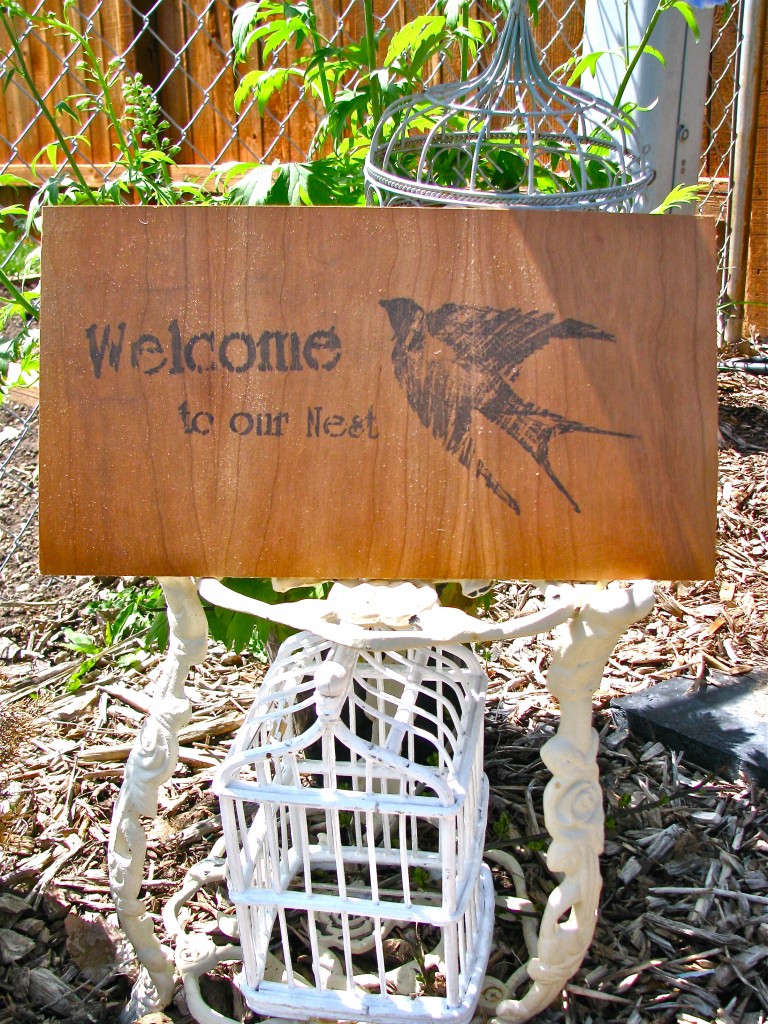You can transfer printed images and text onto wood with this tutorial. Think of it as a giant, customizable rub-on!
How to:
made with
images printed with a LASER PRINTER
spoon or knife
untreated, unpainted wood
1
You’re going to need to buy acetone for this project. You can find it by the paint thinner in the hardware department of any mass merchandiser. I know you’re wondering whether you can just use the nail polish remover you have in your cupboard. It does work to some extent, but the image will be much darker if you use pure acetone.
2
You need to print your images on a LASER PRINTER. This is very important. Your regular color inkjet printer will not work, the ink will simply run. If you don’t have a laser printer at home, chances are your local library or school has one. If you’re using text, be sure to print it backwards. You can do this by clicking on printer settings and selecting “mirror image” or “reverse image.”
(I have also tried this project with copied images using a Xerox machine. It kind of worked, but the image was not sharp and it did not rub off consistently. You should really use a laser printer for best results.)
3
Cut out your images, and lay them face down on untreated, unpainted wood. Wear a pair of rubber gloves because this chemical is harsh on skin, and it will ruin your manicure.
4
Pour the acetone directly on top of the paper. Let the paper absorb the acetone, then use the blunt end of a knife or a spoon to rub directly over the image. Treat this like you would a scrapbooking rub-on, make sure you are rubbing firmly over the entire image. Work in small areas at a time, rather than scribbling over the whole picture at once. This will help ensure that you’re not missing any areas.
5
If you’re looking for great free clipart, I recommend checking the graphics fairy. All the images on that site are available for personal use, or for use in projects that you sell.
6
Check to see that your image is transferring properly. You can touch up areas with some more rubbing.
7
Wait a few minutes for the wood to dry, then coat it with a layer of clear protective sealant. Let the first coat dry and add a second coat.
Made By Marzipan may have received product or payment for this post. Posts may contain affiliate links. Disclosed in accordance with the Federal Trade Commission's 16 CFR, Part 255.





 Finished?
Finished?
Can I do this on painted wood? What will the acetone do?
No, you can’t use it on painted wood, the acetone will dissolve the paint.
The sealant, should be a water base or oil base? like Polyurethane (clear)
I’m actually curious about this myself. I used an oil-based, clear satin finish, polyurethane on an image I have been working on last night, and it ruined it to the point I’ll have to start over. For some reason, it made the dark grains in the wood (black walnut) extremely dark and the words cannot be read. The light areas seem to be fine though.
Hi! :) Do I have to print the image on a regular sheet or the process needs a special kind of paper?
t’s regular paper, but it needs to be a laser printer… like a Xerox copying machine.
Hi , this is a great idea ! Just wondering , can this work for color copies ?
It can! It’s just a paler color. And of course, the image is reversed if you have not done so.
Thanks! Can you tell us if this image will hold up if you stain the wood AFTER the transfer is done?
Hi. I’m actually not sure… it seems like there would be potential for the chemicals to smear the ink. If you give it a try, let us know!
Can you stain over the print before you clear coat or will the ink to run or smear?
I would think it would smear… but if you experiment, please let us know!
Hey Marzipan! I commented on your YouTube video. I like your approach and explanation, and suggested some alternatives such as citrus solvent. This is a bit more info about the poly-acrylic method. (ALSO, you can use the same acrylic as the final finish, so it’s an all-in-one liquid solution.)
https://www.youtube.com/watch?v=_lTh4JJyZtA
this was super helpful, thank you! but wouldn’t a wider flat surface work better? such as a spatula?
Hi …. Can the block of wood have a piece of laminate sticking on its surface????
Hi … Can this also work on a piece of wood with laminate sticking on its surface???